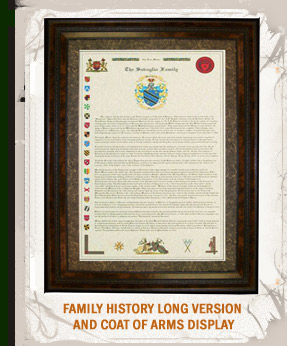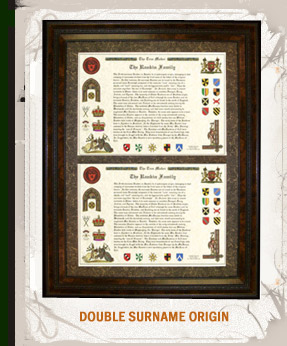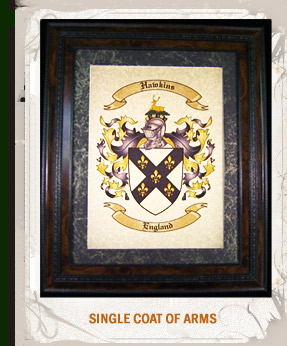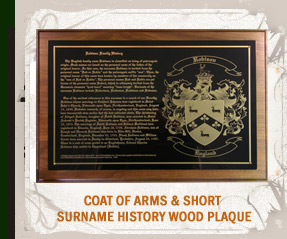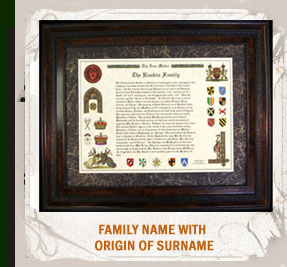Display your French coat of arms or your French heritage
History
of France and its French Heritage: France, or Gaul, as
the Romans called it, was inhabited during the earliest years in
which we have any knowledge of it by a number of independent tribes,
who appear to have been mainly Celtic in race. In the latter half
of the seventh century B.C., the Romans conquered a portion of the
southeast, and under Julius Caesar the conquest of all Gaul was
completed between 58 and 51 B.C. During the Roman occupation, the
country became completely romanized in language, civilization and
religion, and many flourishing towns sprang up; but in the decline
of the Roman Empire various German tribes began to make settlements
in the country, especially the Visigoths, the Burgundians and the
Franks. It is from these last that the country took its name. Toward
the close of the fifth century, Clovis, chief of the Salian Franks,
completely overthrew Roman dominion and made himself master, not
only of almost all France, but also of considerable territory east
of the Rhine. The dynasty, which he founded, is known as the Merovingian.
On
the death of Closiv in 511, his kingdom was divided among his four
sons. A large part of the history of the Franks under the Merovingian
kings is the history of the contests between Neustria and Austrasia,
the two most important of the states into which the Empire was divided.
Pippin of Heristal, mayor of the palace of the Austrasian king,
conquered Neustria and thus brought all France under the same sway.
He was the real ruler, although there was still a nominal king,
as there was during the time of Pippin's son, Charles Martel.
Pippin the Short, first mayor of the palace under the last of the
Merovingian kings, was himself raised to the throne in 751, and
was succeeded by his son, Charles the Great {Charlemagne},
whose empire was German.
On the death of Charlemagne's
son, Louis the Pious, the empire was divided among his sons by the
Treaty of Verdun {843}, Charles the Bald receiving that part which
most nearly corresponds to modern France. It is at this time, therefore,
that the separate history of France may be said to begin.
Charles
the Fat, King of Germany,
succeeded in 884 in making himself ruler of the Frankish territory
also, but he was deposed after three years. After the brief usurpation
of Odo, Count of Paris, Charles III, the brother of Louis III, was
recognized as king. His authority was little more than nominal,
as France was divided into a number of great fiefs, the holders
of which were practically independent. This circumstance made it
impossible for Charles to offer any adequate resistance to the Norman
pirates, who he was obliged to buy off by surrendering to them the
territory, which took from them the name of Normandy. On the death
of Louis V, in 987, Hugh Capet, the son of the most powerful of
the great vassals, was raised to the throne, founding the Capetian
Dynasty.
The
first great task of the Capetian kings was to re-conquer the royal
prerogatives from the great vassals. Louis the Fat, who came to
the throne in 1108, was the first really strong ruler of the line.
In his struggles with the nobles he was greatly helped by the fact
that the latter had been much weakened by the Crusades
and also by the increased power of the towns, which allied with
the king.
With the death of Charles
IV, in 1328, the first branch of the Capetian kings became extinct,
and Philip, of the House of Valois, a cousin of Charles IV, came
to the throne, according to the Salic law.
The
claim of Edward III of England
to the throne of France led to a series of wars between the two
countries, which lasted for over one hundred years. Under Charles
VII, France regained from England all the territory of France except
Calais. The shrewdness and unscrupulousness of Louis XI {1461 -
1483} completed the subjugation of the great barons and laid the
foundation of absolute monarchy. Maine, Anjou, and Province were
left to him by the will of the last count, and a large part of the
possessions of the Duke of Burgundy came to his hands shortly after
the death of Charles the Bold of Burgundy. Louis's son and
successor, Charles VIII {1483 - 1498}, united Brittany to
the Crown by his marriage with Anne of Brittany.
Charles
was the last king of the direct line of Valois and was succeeded
by Louis XII, of the House of Valois-Orleans. On his death the crown
passed to another branch of the House of Valois, the Valois-Angouleme
branch, in the person of Francis I {1515 - 1547}. Francis
continued the attempts at conquest in Italy
and thus came into conflict with Charles V of Germany, who claimed
Milan. The results were disastrous for Francis. On his death, his
son, Henry II {1547 - 1559}, came to the throne, and continued
the struggle with Austria. His reign is noteworthy because during
it began the persecution of the Huguenots. Francis II, the husband
of Mary Queen of Scots, succeeded his father, Henry, but reigned
little more than a year "{1559 - 1560}. During his reign
and the reigns of his brothers, Charles IX and Henry III, intrigue
and corruption gave to women a dangerous influence at court and
in public affairs. During the reign of Charles IX, who was entirely
under the influence of his mother, Catharine de' Medici, the
struggle between Huguenots and Catholics came to a climax in the
Massacre of Saint Bartholomew's Day. These religious wars
were terminated only when Henry IV of Navarre {1589 - 1610},
the leader of the Huguenots, who became king on the death of Henry
III, became a Catholic.
During the minority of
Henry's son, Louis XIII, the policy of France was somewhat
wavering, until the Prime Minister, Richelieu, gave it a steady
direction. He continued the policy of the former kings who had labored
for the humiliation of Austria and relentlessly oppressed the Huguenots.
Louis XIII died in 1643, the year after Richelieu, and was succeeded
by his son Louis XIV. Mazarin, during the years of Louis's
minority, carried out the policy of Richelieu, and Louis XIV, when
he took the rule into his own hand, proved to be of strong will
and steady purpose. The close of this reign in 1715 found the finances
in disorder, an enormous national debt imposed upon the country,
and industries depressed. Louis XV, the great-grandson of Louis
XIV, succeeded him at the age of five years. During his minority,
the regent, the Duke of Orleans, squandered the revenues, and when
Louis himself assumed the authority matters grew worse.
With the reign of Louis
XVI began the period of reaction against oppression. The king himself
was honest and well meaning, but the whole administration was corrupt,
and the court, the nobility, and the clergy formed a privileged
class, united to oppress the people. The taxation, which was necessarily
heavy, fell upon the peasantry only. The good intentions of Louis
were neutralized by a total lack of energy and firmness, and he
was unable to appreciate the fact that his few concessions could
not materially improve a situation, which called for the most thoroughgoing
reforms. The great difficulty of his government was the hopeless
condition of the public finances. Finding ordinary measures unavailing,
Necker called for the congregation of the States-General, which
had not met since 1614. This body met in May 1789. In 1799 Napoleon
was made first consul, and for the next sixteen years he dominated
the history of France.
Louis XVIII, who was placed on the throne of France on Napoleon's
first abdication in 1814 and was restored in 1815 after the Hundred
Days, at first governed with the support of a moderate liberal party.
The reactionary spirit of the aristocrats and returned

